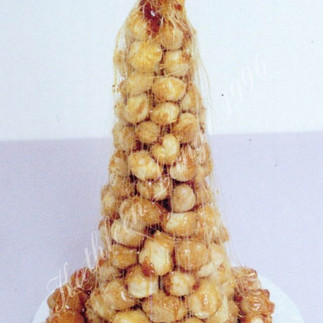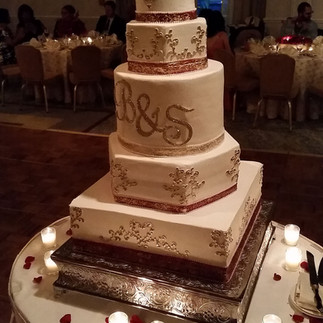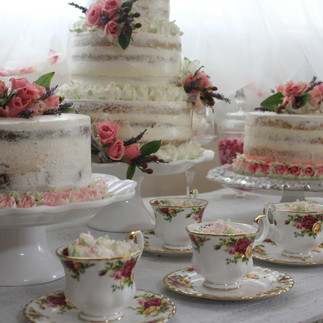"Exploring Decorating Styles Across Cultures."
Kathleen Lange's Confectionary Chalet endeavors to honor and safeguard the rich tapestry of cake flavors, decorating methods, and cultural customs from around the world.
Numerous traditional styles have waned under the sway of Americanized fashions, prompting Kathleen's mission to rekindle recognition of these time-honored styles and traditions.
If you possess insights or knowledge regarding your country's cake decorating heritage, please don't hesitate to contact Kathleen.
Kathleen eagerly anticipates showcasing your photographs and traditions to a global audience. Thank you for your contribution to this worldwide celebration of cake craftsmanship!"

Asia
Japan: Japanese weddings often feature imposter cakes, crafted from artificial materials and adorned with wax icing. These faux confections, sometimes even producing a puff of steam, serve as elaborate centerpieces. Meanwhile, actual cakes hidden in the kitchen are sliced and served to guests.
Korea: In Korea, the preference leans towards less sweet options compared to American-style cakes. Ground steamed rice cakes covered in red bean powder or tiered sponge cakes with nondairy whipped cream are popular choices.
China: Traditional Chinese weddings showcase the lapis Surabaya, a multi-layered cake symbolizing success for the couple. The cake-cutting ceremony starts from the bottom, with pieces offered to parents and grandparents before reaching the newlyweds.
British Isles
Great Britain: British weddings feature rich fruitcakes soaked in cognac and filled with a medley of dried fruits, creating a moist and flavorful dessert. Marzipan, brandy butter, or fondant are common frostings, and the top tier, known as the christening cake, is preserved until the birth of the first child.
Ireland and Scotland: Fruitcakes remain popular in Ireland and Scotland, often infused with bourbon, brandy, or whiskey. These multi-tiered delights are typically spread with almond paste.
Caribbean Islands
Caribbean: Couples in the Caribbean indulge in dark fruitcakes laden with dried fruits and spirits like sherry, wine, or rum.
Bermuda: Bermudian weddings feature small cedar saplings atop cakes, symbolizing the couple's growing love. After the ceremony, the sapling is replanted, preserving the tradition for future generations.
Central Europe
Germany: German weddings showcase rich nut or genoise sponge cakes, often infused with liqueur or syrup and filled with jam, marzipan, or nougat. Artificial coloring is frowned upon in cake decoration.
France: The French delight in croquembouche, a towering pyramid of cream-filled pastries coated in caramel.
Crocquembouche by: Kathleen Lange - 2006
Italy: Regional variations abound in Italian weddings, with mille-foglia—a layered pastry with chocolate, vanilla creams, and strawberries—being a popular choice.
Eastern Europe
Lithuania: Lithuanian weddings feature sakotis, a cookie-like pastry shaped like a Christmas tree and adorned with fresh flowers and herbs.
Ukraine: Ukrainian couples share Korovai, a wedding bread adorned with symbolic designs representing eternity and family unity.
Northern Europe
Norway: Norwegians opt for brudlaupskling, a wedding bread topped with cheese, cream, and syrup, reflecting a time when wheat-based foods were considered a luxury.
Denmark: Danes enjoy cornucopia cakes made of almond cake and marzipan, often filled with candy or sorbet and adorned with pastillage decorations.
The Mediterranean
Italy: Zuppa inglese, filled with chocolate custard, vanilla custard, rum cream, and fruit, is a staple at Italian weddings.
Greece: Flourless almond cakes filled with vanilla custard and fruit, covered in sliced almonds, are preferred by Greek couples. Traditional sourdough wedding bread adorned with beads and blossoms is also cherished.
North America
United States: American weddings typically feature traditional tiered cakes, though modern variations include cupcakes and individualized cakes. Flavors range from classic vanilla and chocolate to regional specialties reflecting diverse cultural influences.
Australia & New Zealand
Information coming soon!
North and South Africa
Information coming soon!































Comments